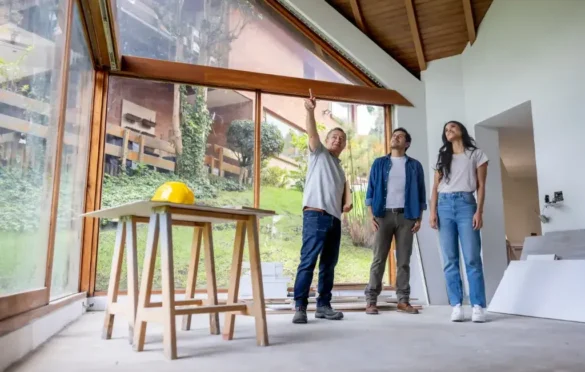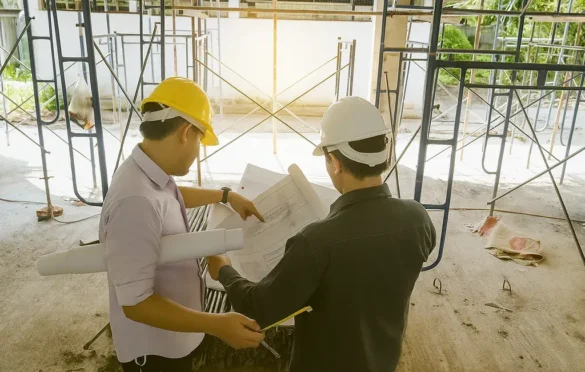Explore this post with:
Modern architecture has been steadily shifting toward spaces that blur the line between indoors and outdoors. Homeowners increasingly want environments that extend living areas into nature without sacrificing comfort or design.
This desire for connection has fueled the popularity of innovative shade systems such as retractable pergolas, which bring flexibility, style, and functionality to contemporary homes. More than a passing trend, retractable roofs have become an essential design element in crafting seamless indoor-outdoor living spaces.
The Rise of Indoor-Outdoor Living in Modern Architecture
Architects and homeowners alike are embracing the idea of indoor-outdoor living as a lifestyle choice. It’s not only about creating patios or decks but about making them integral extensions of the home’s design. Glass walls, sliding doors, and open-plan layouts all contribute to this vision, ensuring that boundaries between interior comfort and exterior beauty are nearly invisible. The addition of flexible roofing systems enhances this integration, allowing outdoor areas can be used in all weather conditions.
The trend also reflects a broader cultural shift toward wellness and sustainability. People value natural light, fresh air, and the therapeutic benefits of spending time outdoors. Designing homes with spaces that connect seamlessly to gardens, courtyards, or terraces brings these elements into daily life while maintaining the convenience of a modern household.
How Retractable Roofs Transform Outdoor Spaces
Retractable roof systems bring unmatched adaptability to outdoor living areas. With the touch of a button, homeowners can open their space to the sky or close it for shelter, depending on the weather. This makes outdoor dining, entertaining, or simply relaxing possible throughout the year. Unlike fixed structures, retractable roofs give homeowners control, creating an adaptable environment that responds to changing seasons and climates.
Another significant benefit lies in their design flexibility. Modern systems are designed to complement a wide range of architectural styles, from sleek minimalist homes to rustic-modern blends. They can be customized in terms of size, material, and finish, ensuring they enhance rather than interrupt a home’s aesthetic flow. By integrating retractable roofs into their designs, architects can offer clients both beauty and functionality in one solution.
Aesthetic and Functional Harmony in Design
One of the most compelling reasons for the surge in retractable roof popularity is their ability to strike a balance between aesthetics and function. Unlike older, bulkier shading options, today’s designs are refined and sophisticated. They can feature slim profiles, hidden mechanisms, and high-quality fabrics or louvres that complement modern architectural lines. This creates a seamless extension of the home rather than an obvious add-on.
From a functional standpoint, retractable systems address common challenges in outdoor living. They provide protection from harsh sun, rain, and even wind without obstructing views or natural light. By incorporating LED lighting or heating systems, these spaces remain usable well into the evening and during cooler months. This duality of style and practicality is precisely what modern homeowners seek when reimagining their living environments.
Creating Comfortable Spaces Year-Round
For many households, the primary drawback of outdoor areas is that they are weather-dependent. Retractable roof systems eliminate this limitation. In summer, they provide shade that keeps spaces cool and inviting. During rainy days, the structure provides shelter while maintaining airflow and allowing in light. Even in colder months, when paired with outdoor heaters, these spaces remain warm and cozy, ensuring year-round usability.
This level of comfort translates into more than convenience—it reshapes how families and guests interact with their homes. Outdoor kitchens, lounges, or garden retreats evolve from occasional-use areas into integral living spaces. By maximizing functionality across seasons, retractable roofs increase both the livability and value of modern properties.
Sustainability and Energy Efficiency Benefits
Beyond comfort and design, retractable roof systems also support sustainability. By controlling sunlight exposure, they help regulate indoor temperatures, reducing reliance on artificial cooling or heating. In hot climates, extended shading can dramatically reduce energy consumption, while in cooler seasons, opening the roof allows for natural warmth and light. This responsive design contributes to a home’s energy efficiency and aligns with the growing demand for eco-conscious architecture.
Materials used in high-quality systems are also designed with durability and environmental impact in mind. From recyclable aluminum frames to weather-resistant fabrics, retractable roofs represent a sustainable investment that supports modern living values without compromising performance.
Enhancing Lifestyle and Property Value
The integration of retractable roofs into home design is not only about aesthetics and comfort—it also enhances lifestyle. Families can host gatherings without worrying about unpredictable weather. Professionals working from home can enjoy natural light and fresh air in shaded outdoor offices. Children have safe, adaptable play areas protected from harsh sun or rain. This versatility ensures that outdoor areas become central to daily life rather than supplementary.
From a financial perspective, these additions often increase property value. Prospective buyers see retractable roof systems as desirable features that elevate both design and functionality. By investing in such innovations, homeowners create a more attractive and future-proof property that aligns with modern living expectations.
Conclusion
The future of modern home design is rooted in flexibility, sustainability, and the seamless blending of indoor and outdoor environments. Retractable roof systems embody these values by transforming patios, decks, and gardens into versatile extensions of the home, offering a seamless transition between indoor and outdoor spaces.
Whether it’s enjoying the sunshine on a clear day, seeking shade during summer heat, or hosting friends despite a sudden rain shower, retractable roofs offer the freedom to design spaces without compromise. As architecture continues to prioritize connection to nature and lifestyle enhancement, these systems stand out as both practical and elegant solutions for contemporary living.
In Case You Missed It!
About the Author: archistyladmin
At Architecturesstyle, we’re passionate about smart design, beautiful spaces, and practical tips that help you bring great architecture into everyday life. Whether it's modern home ideas, iconic buildings, or expert advice, our team brings fresh and useful content to readers who love architecture as much as we do.




